Interviews with experts and opinion leaders from our research network
There are two essential elements for corporations: One is a kind of sustainability entailing the continuous creation of long-term value for a wide variety of stakeholders, including clients, shareholders, employees, and society at large. The other is an innovative mind involving being creative and taking on the challenge of delving into uncharted territory in a revolutionized way. This sentiment is also expressed within Hitachi’s Founding Spirit, which is comprised of Harmony, Sincerity, and Pioneering Spirit. We invited Mr. Noboru Yasuda, a Noh actor who plays the role of Waki-kata*1. Noh is a traditional performing art with around 650 years of tradition. Mr. Yasuda is actively involved in a myriad of fields and possesses profoundly deep knowledge in cutting-edge digital technologies, as well as of course, ancient philosophy. We will be talking with him about the sustainability built into both Noh and the classics. We will also talk about the wisdom our ancestors possessed when it came to forging an innovative mind. Through this dialogue we will look for hints that can serve as advice for the organizations and businesspeople. (Interview Host: Osamu Naito, Chairman of Hitachi Research Institute)
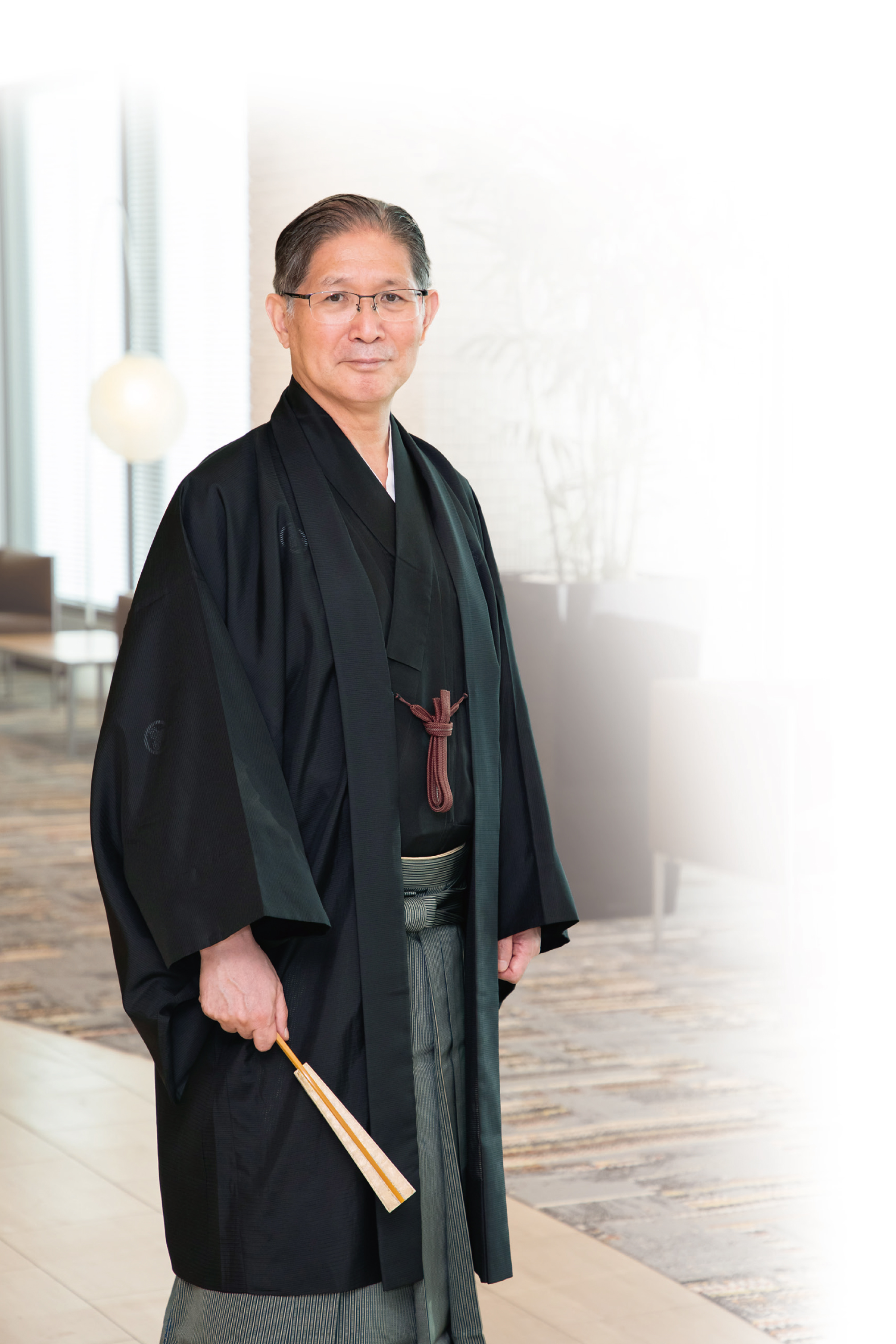
Noh actor of the Shimogakarihoushouryu School (Noh School for Players of the Waki-kata Role)
Noboru Yasuda was born in 1956 in Choshi City, Chiba Prefecture, Japan. During high school, he took an interest in Chinese oracle bone script and ancient Chinese philosophy after becoming acquainted with Mahjong and Poker.
At age 27, he entered the world of Noh under Mineo Kaburaki after being impacted by the prominent Waki-kata’s Noh chants. While actively performing as a Noh actor in the role of Waki-kata, he also holds seminars around Japan, primarily in Tokyo. His seminars, called “Yuugakujuku,” involve temple school-type lectures where participants learn about subjects such as “The Analects” of Confucius.
He has authored a great number of published works, including “Noh: What is the Mechanism that Noh has Continued for 650 Years?” (Shinchosha Publishing Co., Ltd.), “Analects in the Age of Awai: Human2.0” (Shunjusha Publishing Company), “Useful Classics” (NHK Publishing, Inc.), “The Amazing Analects” and “Inanna's Descent to the Underworld” (both published by Mishimasha Publishing)
Naito:Right now, we’re in the midst of the COVID-19 pandemic. Has the COVID-19 pandemic had a significant impact on your activities?
Yasuda:Yes, it has. Almost every performance has been cancelled since the cancellation of my performance on March 1st, 2020. On March 15th, I was scheduled to give a performance and a mini-lecture at the C. G. Jung Institute Zürich, Switzerland. I was in preparation for the performance when the governor ordered the cancellation of that the night before, which meant that my performance was cancelled .
Naito:That must have been tough for you. On the other hand I did hear that you have been undertaking a new timely endeavor amid the COVID-19 pandemic.
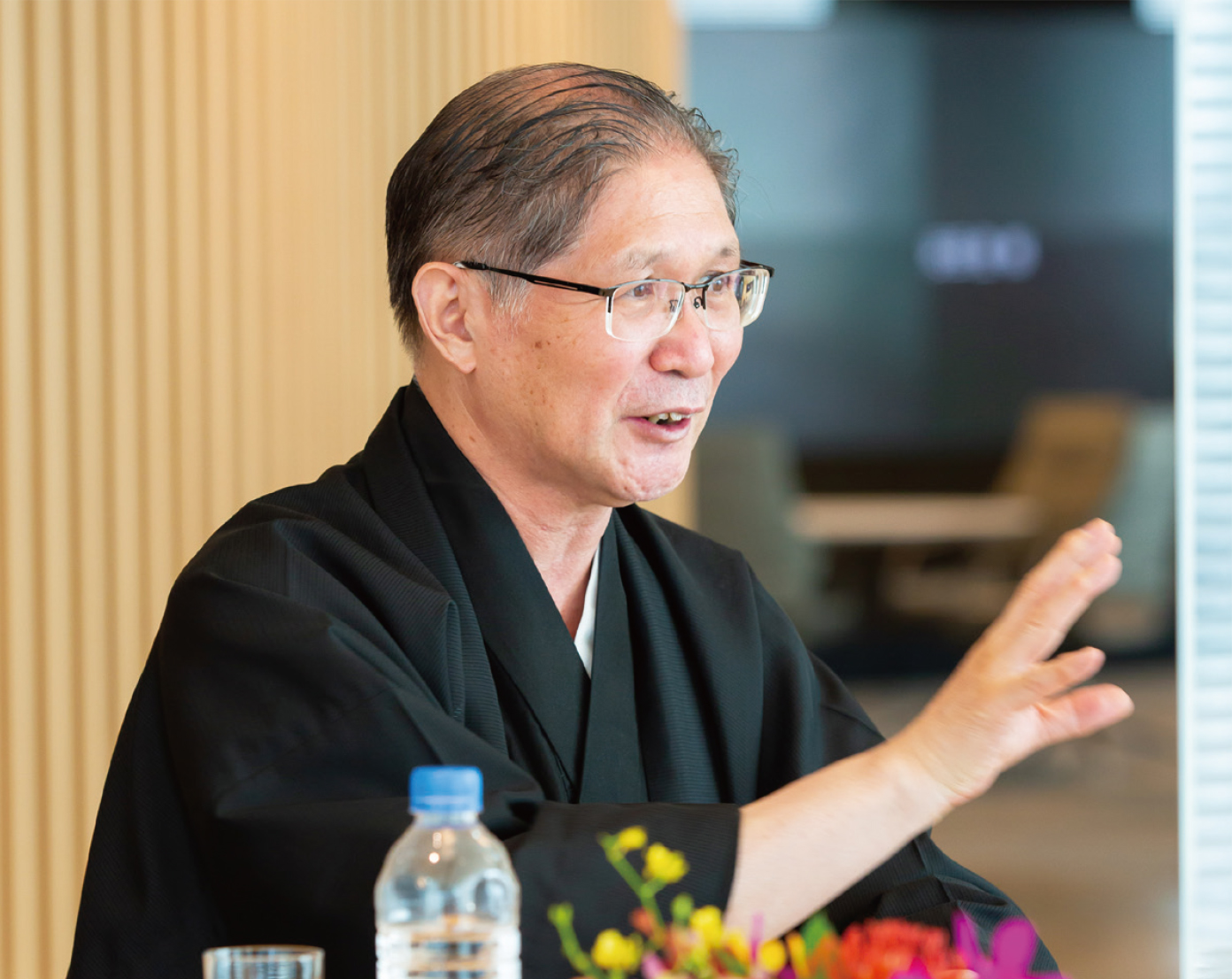
Yasuda:Yes, that’s right. We are now doing rehearsals online using video communication apps and are making use of “Cluster”, a social media tool that we can use within a virtual reality environment. I am interested in making it possible to give performances using virtual reality. This is not about bringing the kind of virtual reality involving holography to the actual Noh stage. What I want to do is to create work in which viewers can enjoy a virtual reality-based space involving a Noh stage. And, since we’re now in the era of 5G, I think that we can succeed in streaming overseas as well with help of voice recognition functions and machine translation services.
Naito:Toward overseas, I supporse you will need modern Japanese translations of the Noh chants (the vocal music portions of a Noh performance).
Yasuda:Actually, since this spring, modern Japanese translations of Noh performances penned by Seiko Ito are being published every other month in the magazine “Shincho.” Jay Rubin, known as the translator of works such as those by Haruki Murakami, is also working on some English translations. The Waki portion would be recited by myself, and the Shite *1 portion would be shown using a modern Japanese translation by Seiko Ito alongside an English translation by Jay Rubin. I am thinking about turning that into a virtual reality-based experience.
Naito:That’s amazing. I, too, love the work of Seiko Ito, so I would really like to experience what you’ve described.
Naito:Noh is a performing art that has been performed continuously since the Muromachi period (1336-1573). I would like to get your take on the art from the perspective of sustainability. Is there some kind of mechanism or structure Noh has that allowed it to be so resistant to change and survive for this long?
Yasuda:Well, I think that there are two key terms to keep in mind when it comes to why Noh has persisted for so long. One is Tradition and the other is the Beginner’s Humility.
Tradition refers to systems that are not reliant on any single prodigy. For instance, when we’re talking about the Tsuzumi drums used in Noh, there are larger Otsuzumi drums and smaller Kotsuzumi drums. There is a difference in terms of drum sizes and how they are played. By skillfully combining the two types of drums, Noh makes it so that exquisite artistic expressions can be produced even if the drum players themselves are not prodigies. The art of Noh has produced this sort of system within its lineup of musical instruments, tools, story structures, and so on and so forth. This makes it possible for the art to be carried on by anyone.
However, just strictly conforming to a particular system results in ending up merely following a manual and a tendency toward mediocrity. In Noh, we have mechanisms to prevent that. One of those mechanisms is, in a word, breathing.
When a Noh drummer plays a Tsuzumi drum, they will inhale before letting out a drum call. The sequence involved in the single beat of a drum entails a sound gap (expressed in writing as “Nn”) before the pre-beat cry, the pre-beat cry itself (expressed in writing as “Iyo-h”), and the banging of the drum itself (expressed in writing as “Pon”). The inaudible sound gap (“Nn”) is important. I have verbalized the sound as “Nn” for our discussion here, but on stage, you won’t actually hear anything. It’s completely silent. When the Otsuzumi player beats their drum, they will first shout a pre-beat cry by yelling out “Iyo” and then create a sound gap (“Nn”) before beating their drum. The sound gap (“Nn”) provided by the Otsuzumi drum player is the signal that the Kotsuzumi drum player needs before jumping into their own sequence involving their own sound gap (“Nn”), a pre-beat cry of “Iyo-h,” and then a beat of their own drum. This sort of duet between drummers is called a “Te.” These Te duets can come in a variety of different combinations, over 200 actually, which involve the mixing and matching of different shouts and drum strikes. All drum strikes are performed while maintaining a sense of the breathing that is going on.
This might surprise you, but Noh drummers do not rehearse together, so they need to learn to get a sense for the breathing of their counterparts. That’s how Noh prevents performers from ending up merely following a manual.
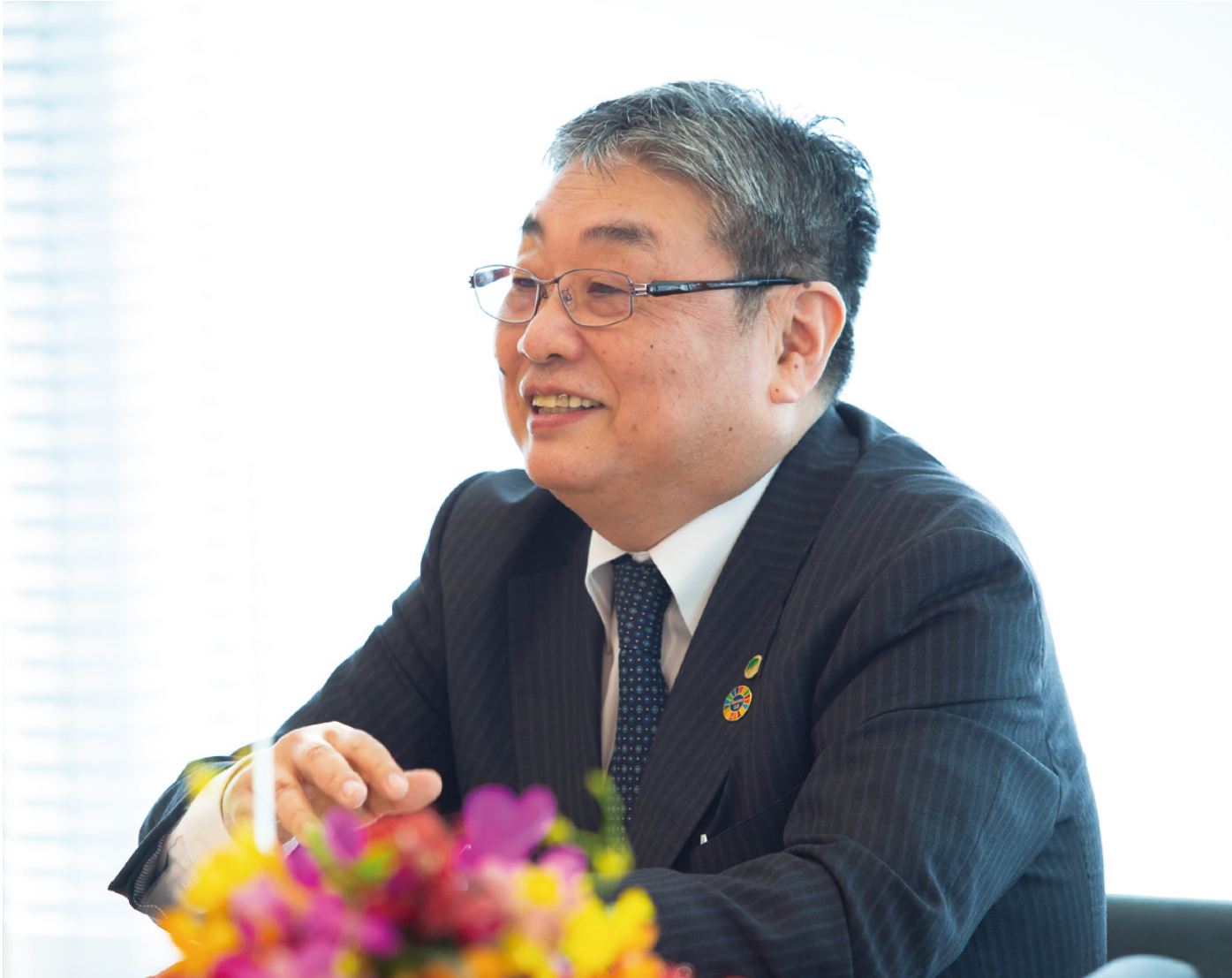
Naito:I see. So, they don’t rehearse together to sync up their respective parts, but instead approach things through sheer effort and will. Needless to say, performers need to keep in mind that Rome wasn’t built in a day. But, it is really amazing that they end up on the level you described.
Yasuda:As for Kabuki, it takes around four or five years before one can appear on stage after joining the National Theater as a trainee. As for Noh, however, it takes around ten years including backstage assistance. That means you need to train for ten years. It would be an ordeal, if a soccer player could not play a single game only until ten years after getting into the sport. But in the world of Noh, that’s normal.
And in actuality, the most important element to master the breathing techniques we are talking about is pouring tea. It’s important to pour tea for your master right when the master wants something to drink, and at a temperature your master wants.
Naito:Wow. That’s even more difficult.
Yasuda:Pre-performance tea, post-performance tea, pre-meal tea, and post-meal tea; they are all different.
Naito:I see. So, it’s about mastering the ability to read the situation.
Yasuda:That’s right. On the stage, that kind of ability is absolutely essential. Even on the off chance that a performer dies on stage, the performance would not end there. There is etiquette for performers to continue the performance where a performer dies on stage. While such etiquette exists, rainfall will have the performance ending quickly. The reason for that is because we can’t let the Noh masks get wet. The masks, called Omote, constitute a tradition going back more than 600 years. But, ending a performance too quickly would be strange as well. So, we jump to the final part of a play, called the Kiri, in a way in which viewers would not see as strange. But, we do not tell them we are doing that. This means that everyone involved in the performance understands based on the shouts provided by the Tsuzumi and Taiko drum players, or via inaudible signals provided by the Shite role, that we’re going to jump to the Kiri at a given moment in time. The ability to read that sort of situation is a must.
Naito:Then it usually takes someone ten years to reach that point.
Yasuda:That’s right. However, as I mentioned a bit earlier, the musical instruments and stories involved in Noh are set up in a way so that even those who are less skilled can get by relatively well as performers. I believe that is where the real wonder of Noh lies.
Naito:I’m sure that, even with such a system in place, that there were a few times where Noh faced some difficulty for the art’s survival. How did your predecessors go about dealing with changes in terms of the sponsors and patrons backing performances, or changes in terms of those in power politically?
Yasuda:That’s where Beginner’s Humility, the other key term, comes into play. There is a famous quote in the Noh treatise called “Kakyo” (literally flower mirror), which was written by Zeami, an achiever of great success in the world of Noh. The quote translates to “do not forget Beginner’s Humility.” The first Chinese character used to write Beginner’s Humility (which is pronounced “Shoshin” in Japanese), is “sho,” meaning “first.” This character is comprised of the koromo-hen radical (meaning “clothes”) found on the left side of the character, and the character for “katana” (or “blade”) found on the right side. The original meaning of this character was “to cut clothes with a blade.” In other words, it refers to the first usage of scissors on new fabric. Zeami used the phrase (“do not forget Beginner’s Humility”) in a way that inferred that one should not forget about the fact that one must take every opportunity to cut away their old self and be born anew.
Zeami implanted that mentality within the art of Noh itself. By having Noh actors develop the ingrained habit of maintaining a Beginner’s Humility, he ensured that they would cultivate a disposition allowing for the acceptance of dramatic changes in terms of the environment surrounding Noh. For instance, Noh has historically come up against many crises in terms of the art’s survival. It was thanks to Noh actor Minoru Umewaka I, that the art of Noh was able to overcome the crisis faced during the Meiji period (1868-1912).
During the Edo period (1603-1868), the arts of Noh, Heikyoku (Heike Biwa lute music), and Kowakamai (a style of recitative dance), were all protected by the feudal government as performing arts used in ceremonies. However, with the end of the Edo period, these arts lost government protection. This caused Noh to be confronted with a crisis of survival. Performers were members of the warrior (samurai) class, meaning that they had the status of national public service workers today. This meant that people with that status found themselves out of a job. At that time Noh actors had three options: Follow the Tokugawa clan to Suruga (a former province located in the central parts of present-day Shizuoka Prefecture); Go back to the rural community from which they hailed; Or, follow the Imperial Court. The head of the Kanze clan chose to go to Suruga. Minoru Umewaka opted to follow the Imperial Court, which was an enemy to the Tokugawa clan.
Originally from a merchant household, we are told that Minoru Umewaka became part of the warrior class by purchasing samurai status. It seems as though he did face bullying in various forms, such as by not being allowed to practice Noh. His adoptive father was part of the Umewaka clan, which was part of the warrior class going back for hundreds of years. So, after Japan transitioned into the Meiji period, he ended up ruining himself with a life of debauchery. Some even say that Minoru Umewaka would recite Noh chants at the foot of a bridge even thereafter. At the beginning of the Meiji period, just chanting Noh text would cause rocks to be hurled at him. This is almost possible because of his origins as a former member of a merchant household. Had he originally been of the warrior class, I believe that he would not have been able to disgrace himself by doing something so embarrassing.
Naito:Noh is quite interesting from the perspective of diversity, given that individuals hailing from different fields are found flourishing within the art’s defined system. Although the mentalities involved in the art are carried forward, each new era brings new kinds of people to Noh, meaning that it’s not merely the system itself that is functioning.
Yasuda:The Umewaka clan originally played the role of Tsure *2, so members of that family could under no circumstances become able to play the protagonist role of Shite. And on top of that, Minoru himself originally hailed from a merchant household. He was hindered on so many levels. Meanwhile, the head of the Kanze clan, who ended up going to Suruga, was lied to by his promoter, who ended up selling almost all of his masks and costumes. If Minoru Umewaka had not existed, chances are high that Noh would have disappeared like Heike Biwa lute music and Kowakamai. I believe that the whole reason Minoru Umewaka was able to continue on with Noh in that situation was because he loved the art. He loved it more than anything. I’m sure that is why he was able to preserve it.
Naito:In “The Analects”, there is following line: “while someone knowledgeable about something might have the knowledge itself, they are no match for someone who loves that thing. But someone who loves that thing, is no match for someone who enjoys that thing.” I think Minoru Umewaka must have really enjoyed Noh.
Naito:I watched the public talk you appeared in the other day, “Reading Soseki and Yakumo Through the Lens of Noh.” I really enjoyed the paragraph from “I Am a Cat.”*3
Yasuda:Around 1910, when Hitachi, Ltd. was founded, was the same period when Soseki Natsume(novelist, 1867-1916) enjoyed much success as a writer. This was around the time Einstein published his Theory of Relativity (in 1905) and when Freud wrote “The Interpretation of Dreams” (in 1900).
Naito:Soseki once taught English at the Fifth High School, one of the previous incarnations of Kumamoto University, which is where Lafcadio Hearn (Yakumo Koizumi, novelist and writer, 1850-1904) had worked. One of Soseki’s students was Torahiko Terada (physicist, 1878-1935). Torahiko learned the art of Haiku from Soseki and went on to start a Haiku society with his associates that was presided over by Soseki himself. Torahiko then went on to study at Tokyo Imperial University. After that, he became famous as a physicist and maintained a long-standing teacher-student relationship with Soseki. Torahiko appears in “I Am a Cat” as physicist Avalon Coldmoon (Kangetsu Mizushima).
During one particular lecture, Soseki said that “scientists and artists share some common ground.” Torahiko said in his essay “Scientists and Artists,” that “the world to a scientist is not irreconcilable with the world of an artist.” “Creation is the life force of both the scientist and the artist,” said Torahiko. He goes on to say that “scientists discover things previously unknown, and artists seek out new things.” He also states both simultaneously require observational skills and an imagination.
He furthermore states, “while people think that scientists just analyze theories, their work requires something even more important: Intuitiveness.” There are also the following passages:
(1)“Since time immemorial, scientists have made significant discoveries. Many of those who have produced excellent theories had first perceived intuitively what the results would end up being, and created logical passages to reach their goal.”
(2)“This masterpiece of intuition is, for scientists, not something that can be easily ensured. Before one can obtain it, a constant, devout effort must be put forth. Questions for which no explanation could be obtained even after long contemplation almost always coincidentally disclose their ultimate answers everywhere and all at once like a flash of lightning.”
The transposition of this kind of intuition of a scientist over to the perspective of an artist results in what Torahiko calls “inspired interest.” What the colors, textures of writing brushes, harmonies, melodies, and other elements used by artists to express that “inspired interest” are to those artists, are what theories and analyses are to scientists.
Yasuda:I see. That is quite interesting. The discussion of intuition really seems akin to the Confucian concept of “Learning the New by Reviewing the Old.”*4
Naito:One can consider these words to represent the process of bringing about innovation. In the original text of “The Analects,” there is a character in between the first two and last two that is an expression of the passage of time. In your published works and lectures, you have said the following: “This does not refer to mere time. It refers to magical time wherein something changes in a state where nothing can be seen in the depths. It is time to slowly warm things up, or time to wait for something to ferment.”
A familiar example would be this common phrase: “Wait before sending out a love letter you’ve written in the middle of the night.” I think this also applies to plans or proposals people prepare daily at their workplace. There is always something you will notice when going back to review something after a day has passed. After some deliberation, you may sometimes have a sudden epiphany. I really feel that without this magic time, that one will not gain access to new wisdom.
This middle Chinese character of the five used in the expression, in other words, represents time that is necessary to have something happen. I think this passage of time cannot be removed from the equation. As for the first two characters, however, perhaps the time used to warm up existing knowledge and absorb it can be shortened a little bit. We should think about methods whereby we can efficiently absorb knowledge. That’s also the case for learning about the wisdom of our ancestors. I also think that borrowing strength from external sources when one doesn’t have enough wisdom is a way to bring about innovation.
Yasuda:What made possible the concept of Learning the New by Reviewing the Old, one could say, is our brains having evolved to have a certain level to allow us time to think after we began to externalize our acquired knowledge using writing systems. The externalization of knowledge is progressing even further due to elements like artificial intelligence and Wikipedia, but we need to make clear distinctions between knowledge, which may be externalized, and wisdom, which must not be externalized. It is wisdom that allows for Learning the New by Reviewing the Old to take place for the first time. Mere knowledge alone does not allow Learning the New by Reviewing the Old to take place.
Naito:Some things change, and the others don’t. Some changes may be accepted, and the others are not. Making clear distinctions between these elements is crucial, isn’t it?
Yasuda:My own way to refer to wisdom, which must not be externalized, is “wisdom that should be embodied.” The Sumerian myth “Inanna's Descent to the Underworld” is a tale from an era when the first writing systems had come about. We are told that it is the oldest myth currently in existence. I’ve done a modern Japanese translation of the myth and turned it into a stage production before. That was when I studied Greek and Sumerian. With these kinds of languages, it’s best to avoid automatic translation undertaken using translation machines and other means. It’s best to embody the text in those languages. That results in ideas rising to the surface. All kinds of Greek words must pop into one’s head. This constitutes wisdom that should be embodied. Company histories are the same, don’t you think? It’s the same as with one’s own life history. It’s most definitely wisdom that should be embodied. I think whatever comes about as a result of that process constitutes something important.
Naito:Since 2019, there has been a plan to build a facility called Hitachi Origin Park (Tentative Name). The idea is to build it in Hitachi City, Ibaraki Prefecture, which is where Hitachi was founded.*5 We didn’t want to merely communicate its corporate philosophy and founding spirit, but also wanted to have the facility serve as a contributor to tourism in Hitachi City. We looked into various museums and archives for planning the facility, and we learned that great companies, including those overseas, regularly ensure that their corporate histories are communicated to others.
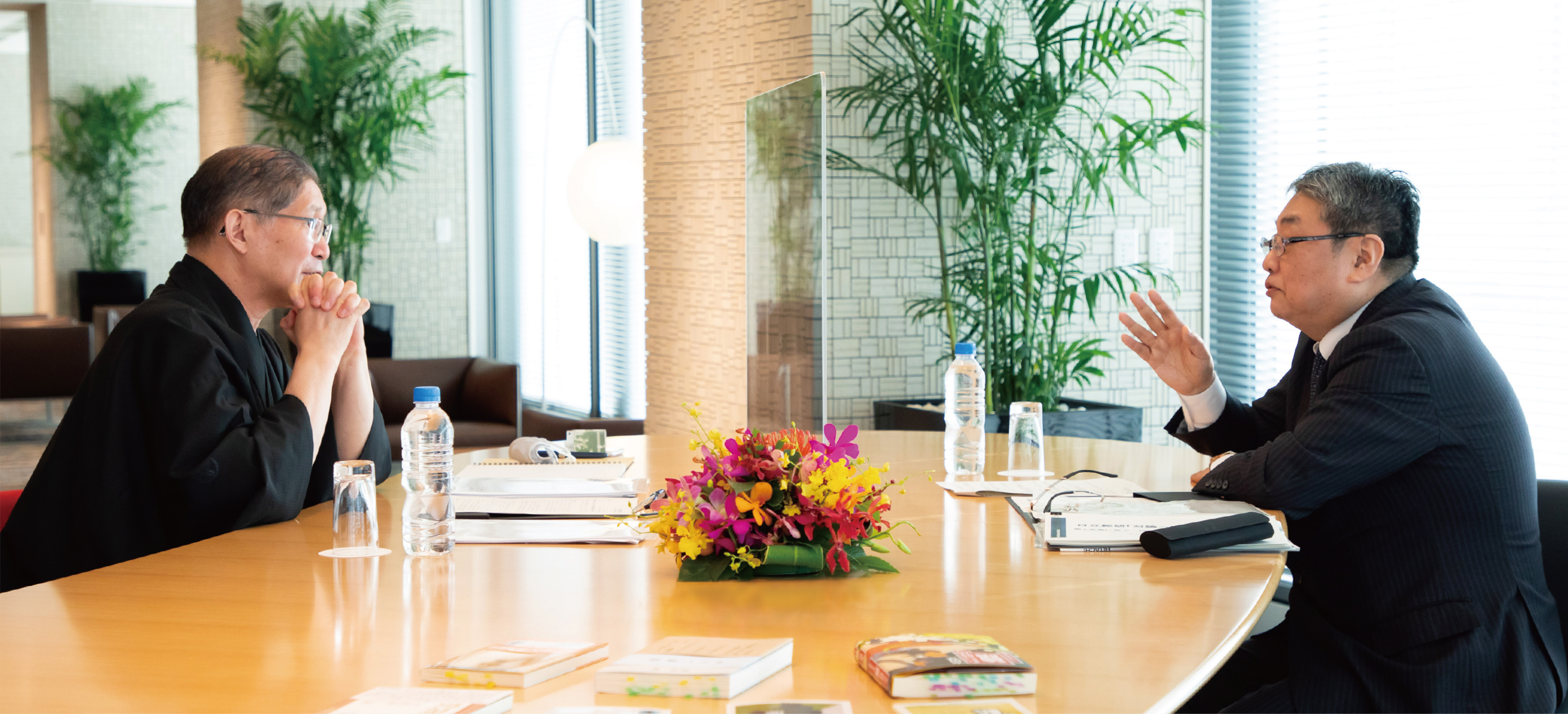
Yasuda:I imagine that would indeed be the case.
Naito:There is almost no exception to this rule. When you think about a company’s value to society, companies are required to be contributors to the world through efforts such as, for instance, Sustainable Development Goals. To that end, we held discussions concerning the fact that we would need to communicate with common language. This project is something we started amid that process. The facility is scheduled to open sometime during the 2021 fiscal year. However, I think, not just be actual historical heritage artifacts on display, for instance, there may be some kind of mechanism attempted whereby participants in various regions will connect to Origin Park using a virtual platform and be able to see the inside and do a walkthrough without physically being present.
Yasuda:A museum rendered using 3D and virtual reality. That’s interesting. Earlier, I talked about how we are making use of virtual reality during rehearsals. I think that going forward, both the virtual world and real world will be important. It already feels like the virtual world is actually fairly real.
Naito:Right now, we in the real world are having to maintain social distance with one another due to the coronavirus pandemic and people are trying to build close communication in the virtual world. When the virtual overlaps with the real world, the result is a new reality. We can actually see all kinds of possibilities coming into view right now. It’s possible that we might even see changes in how people communicate.
Yasuda:If I was rendered as a hologram, it would be difficult for you to even distinguish between the two realities.
Naito:It sure would be. The world is changing. It goes without saying that there is much we don’t understand, and much we don’t know. It would probably be a good idea to not fall into the trap of thinking that there are things that couldn’t possibly happen.
Yasuda:The other day, I was invited by University of Tokyo Professor Masahiko Inami to give a lecture at the university’s Graduate School on the “Expansion of Physical Sensations.” We see our bodies as existing within the boundaries of our skin, but in actuality our consciousness uses the space surrounding our bodies as well. This means that we also experience sensation in that respect, too. The French philosopher, Maurice Merleau-Ponty, said that once a cane becomes a familiar tool to someone, that tool becomes a tool of perception for that person. In other words, the cane becomes an extension of their own body. The body itself doesn’t expand at all, but physical sensations that individual experiences do.
Around 2000 BC, when people began raising livestock and riding horses, horses became part of their own physical sensations. In the same way, video communication apps and holography, or virtual reality, when serving as extensions of physical sensation, create a realistic feeling that is almost as if one were writing with a pen. Just like how one needs experience to ride a horse, one needs experience to master virtual reality as well. Although it feels like the term “physical sensation” is taking on a life of its own in various respects, I think that it is important to interpret the concept more so as “sensations that are connected to the body.”
Naito:The founder of Hitachi, Ltd., Namihei Odaira, raised Harmony, Sincerity, and Pioneering Spirit as the three elements comprising Hitachi’s corporate philosophy. Even now, these are considered the values cherished by everyone in the Hitachi Group.
Let’s talk about the first of these values: Harmony. This means to listen well, to respect the opinions of others, and to come together as one and cooperate to achieve a common goal once a decision is made in relation to that goal after having conducted open and unbiased discussions. What is emphasized is not merely about getting along with one another.
Yasuda:Looking at the original meanings of the words harmony and sincerity, that is very interesting.
The Chinese character used for the word harmony is employed a particular way in “The Analects”. The phrase translates as follows: “The noble man*6 is in harmony but does not follow the crowd. The inferior man*6 follows the crowd, but is not in harmony” There is a famous quote by Prince Shotoku (legendary regent and politician, 574-622), which loosely translates to “cherish harmony among people.” This quote is said to be a play on a phrase from “The Analects,” which loosely translates to “it is crucial to respect etiquette toward harmony among people.” The characters used to convey these respective messages are similar, but the meaning is completely different.
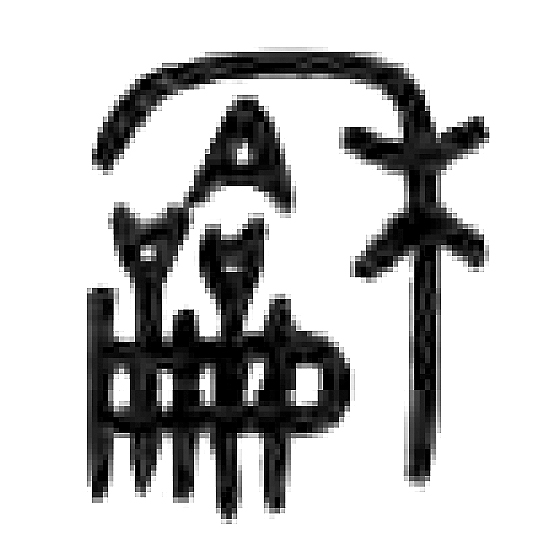
The Chinese character used to write the word for harmony (i.e., 和) was originally rendered in a different way (i.e., 龢). A symbol shaped like 冊, found at the bottom-left of the original Chinese character, represents some whistles tied together with a string. In the top-right, three mouths are represented with the idea being that those mouths are used to play the whistles. While each whistle produces a completely different sound, or in other words, while each person expresses a completely different opinion, they maintain overall harmony with each other. That is what the original Chinese character for harmony conveys. In contrast with that, the Chinese character having the meaning of uniformity (i.e., 同) is used to refer to everyone expressing the same opinion.
In “The Analects”, it says that “while harmony is important, etiquette is important to ensure that harmony produces a nice sound.” In contrast with that, Prince Shotoku said that “harmony” itself is important. It is a Chinese way of thinking that harmony can only be achieved by first respecting “etiquette,” or what we refer to now as the concept of order. In ancient China, it probably would have been the case that a sort of harmony involving everyone noisily talking amongst themselves would not result in the harmony.
I think that it is important to have discussions conform with how Prince Shotoku saw harmony. For instance, if you have ten people conducting a meeting, the first thing you should do is to cast aside your own views. They say that two heads are better than one, so casting aside your own views is when you can have an open discussion for the first time. If everyone does that, then the discussion quickly goes places no one even thought of. That is harmony.
With the popularization of debates, people currently place more importance on who’s view is correct. I don’t believe that discussions concerning who is right result in any substance. I think that what is truly important is not what is correct for a particular individual, but what is correct to the entire group. In other words, I’m talking about collaboration. We can’t push the responsibility for the result of discussion, or for achievements, on particular individuals. That’s what it means to have a discussion rooted in harmony.
Naito:I see. I really understand now what is meant by the phrase “in harmony but does not follow the crowd.” I am convinced. Mr. Odaira also said that discussions should be thoroughly conducted until an agreement is reached.
Next is Sincerity. This involves remaining honest so that the trust of customers can be earned. When a motor breaks, that’s the result of insincere work, so the cause needs to be thoroughly determined.
Yasuda:Sincerity is very interesting as well. There is a quote about sincerity in one of the four Chinese classics called “The Doctrine of the Mean.” Interpretations of the text vary. There were some people who tried to change the times at the end of the Edo period under the slogan of Sincerity, including the Shinsengumi (special police force, 1863-1869), Sontoku Ninomiya (agrarian reformer, 1787-1856), Shoin Yoshida (educator, 1830-1859), and others. Even amongst them, they differed when it came to views on the meaning of sincerity.
Inazo Nitobe (educator, author of “Bushido: The Soul of Japan”, 1862-1933) provides an interpretation of Confucius in his book “Bushido: The Soul of Japan.” Nitobe says that Confucius attributed transcendental powers to sincerity and saw sincerity as divine in nature. He says that Confucius believed there would be nothing without sincerity. And, he said that Confucius saw sincerity’s power as producing changes without conscious movement. By its mere presence, sincerity served to accomplish a purpose without effort. This means that in ancient China, people believed sincerity to entail transcendental powers.
Meanwhile, looking at the power of sincerity as described in the “Doctrine of the Mean,” the first element that comes up is the concept of “foreknowledge.” This refers to the power to predict the future. The second element that comes up is that sincerity is “the origin of all things.” This means that without sincerity, there would be nothing. The third element is that sincerity involves “destiny and all things perfecting oneself and others” This means that it entails the power to change oneself and others.
Earlier, you talked about the concept of sincerity of Hitachi’s corporate philosophy. The concept was that a motor breaks due to a lack of sincerity. That truly is the case. What is really important about the Chinese character used for the word sincerity is the portion found on the right, which is comprised of the Chinese character having the meaning “to perfect.” To define the Chinese character for sincerity in one phrase, it would be to facilitate something becoming what it should be. Motors should work so long as you have the design and parts. It is sincerity that facilitates that.
For instance, a caterpillar in a state of sincerity is a butterfly. Sincerity is already intrinsically found within all things. Although people are supposed to help something become what it should be, somehow they end up doing the opposite. Despite there being a certain way children should be, parents interfering with that has the children ending up failing. This means that they end up doing the opposite of what they should be doing.
Among the elements of sincerity I think that the third element is important. To rephrase the third element of sincerity: The power to complete one’s own sincerity, the sincerity of things, and the sincerity of others. One’s own sincerity entails the power to seek out one’s destiny. The Chinese character having the meaning of “life” (which is the second Chinese character of the two characters used for the term “destiny”) is an expression of something hovering over a kneeling person. All people intrinsically have a destiny. But it hovers above you, so it remains unfound. Confucius didn’t even know his own destiny until he was fifty. So, one must begin searching for their destiny. After that, they begin searching for the destiny of things, then of people. This is the power of sincerity.
Naito:It really seems like an understanding of the composition of Chinese characters provides insight into the minds of our forefathers.
There is another phrase that our founder loved, which loosely translates as follows: “Despite not even living for a hundred years, people deal with enough worries and concerns to last a thousand years.” These are lines from “Nineteen Old Poems” that he interpreted as follows:
(1) People always take on challenges entailing the conquering of the kind of difficult problems or worries that would warrant at least a thousand years of effort before completion, despite the fact that peoples’ lifespans are shorter than a hundred years.
(2) People should tackle long-term, fundamental research and development and forgo chasing short-term results.
The way I understand it, is that people say life spans a hundred years, but in actuality the time spent collectively by people on a certain endeavor amounts to much longer than one hundred years. Even a time one hundred years into the future, which constitutes the generation of one’s grandchildren, is connected to the present, albeit indirectly. Thinking about the future is the duty of the current generation. In that sense, I think life might span two hundred years.
Yasuda:The philosophy of Noh is to think three generations into the future. Faithfully working on what should be done at this moment and thereby seeing a thousand years into the future shares a common nature with the concept that people should have foreknowledge, the first element of the power of sincerity. I think that the power of sincerity is evident in being able to see a thousand years into the future by looking at what’s going on right now.
Naito:Lastly, what kind of advice would you provide to us here working at a strategic thinktank supporting the global growth of the Hitachi Group?
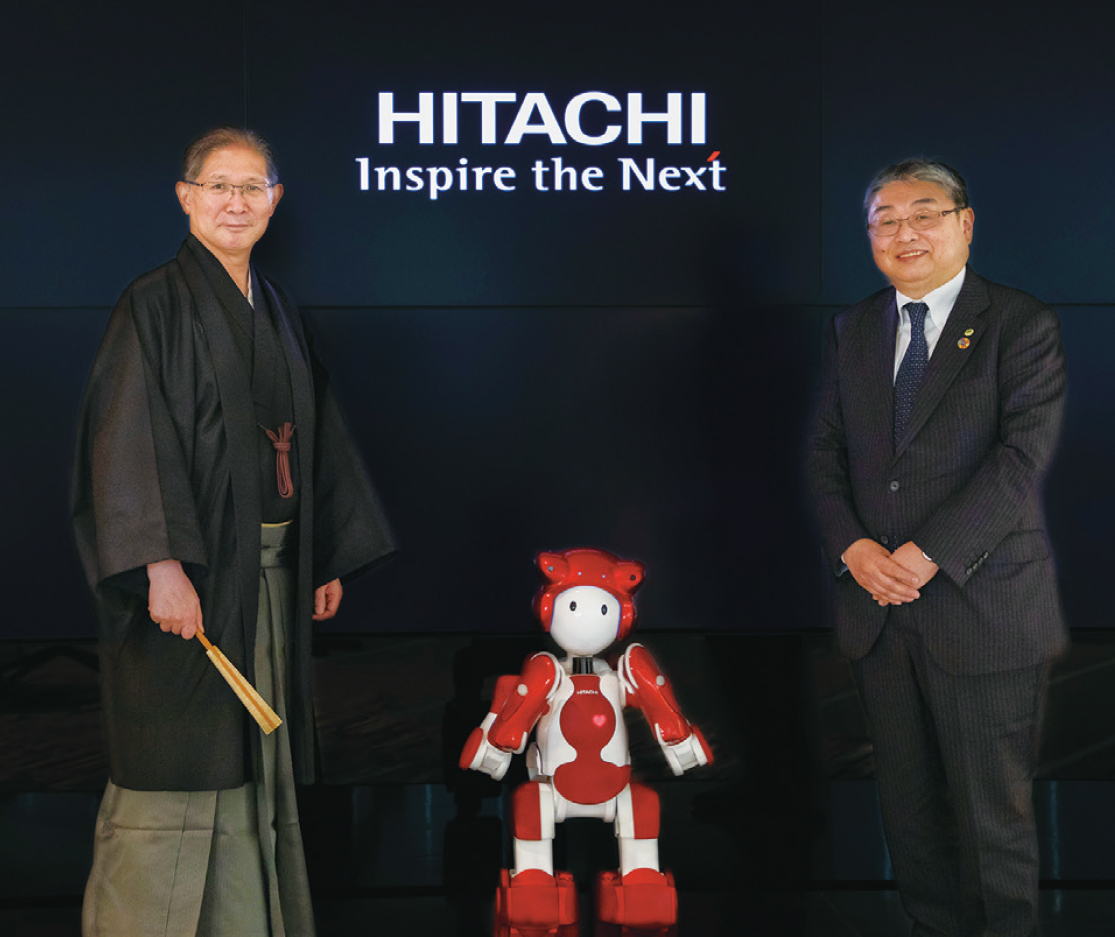
Yasuda:In the context of the Learning the New by Reviewing the Old concept we talked about earlier, we talked about wisdom that should be embodied. An innovative mind is the wisdom that should be embodied, and I think that without it, innovation would be impossible to bring about.
I would like to introduce another book related to the concept of embodiment, which is a book from ancient China called “Jinbutsushi” (which loosely translates to “Who's Who”). There were some wooden tiles with the title of this book written on them discovered among the ruins of Japan’s Nagaoka-kyo, which served as the capital from 784 to 794. There is not much evidence that the book was read by anyone after the capital moved to Heian-kyo. The book’s content concerned governing in assistance to the Emperor, so I believe that it belonged to the Hokke branch of the Fujiwara clan and was a secret book kept away from the eyes of others. Zeami’s “The Flowering Spirit” was also a secret book. It was not made public until the Meiji period.
The book “Jinbutsushi” served to provide explanations to the Chancellor about what kind of people should be allocated to which positions. For instance, while putting people into categories based on the cosmic dual forces of Yin and Yang and the Five Elements*7, the book dictates that “a wise one embodies both the spirits of Yin and Yang.” Being wise, written with a different, single Chinese character today, is having the ability to listen and to see, which is evident by the two Chinese characters (“ability to listen” and “ability to see”) that comprise the term as used in “Jinbutsushi.” The following phrase is also found in the book: “If Yin and Yang are in harmony with one another, then the substance of something will become clear both on the inside and on the outside.” The person who is able to make the internal substance clear is represented by the first character (“ability to listen”) of the two used to write the older term for “wise” (as used in “Jinbutsushi”), and the person who is able to make the external substance clear is represented by the second character (“ability to see”) used to write that term. The following is also found in the book: “Know small matters and know large matters.” Small and large matters refer to the micro and macro elements of something. This means that people can be categorized as those who are skilled at listening, seeing, details, and the bigger picture.
Our knowledge depends fairly on the ability to see. In other words, the main type of information we have is obtained by means of visual perception. This is how we collect data during marketing research as well. However, I think that what is extremely important is the ability to listen. In other words, this means listening to voices unheard and to lend one’s ears to unheard opinions. It’s also important to think about whether those opinions involve a micro or macro perspective at the same time.
Above all, “Jinbutsushi” teaches that governing is not about placing importance on certain types of people, it’s placing importance on what types of people are assigned where. This means that things we see with our eyes, hear with our ears, as well as micro-perspective opinions and macro-perspective opinions, are all important factors. While there is an annotated edition of the book available in China, there is not a single version available in Japan. It’s a mysterious book.
Naito:Having been considered a secret book, the content is deep. It is very interesting to hear a modern interpretation of the book’s meaning. It really is something I’d like to try reading.
Thank you very much for the various insights you’ve provided today. Our talk today was truly a valuable experience.
This talk was conducted while maintaining social distancing.
Hitachi Research Institute is responsible for the translation.
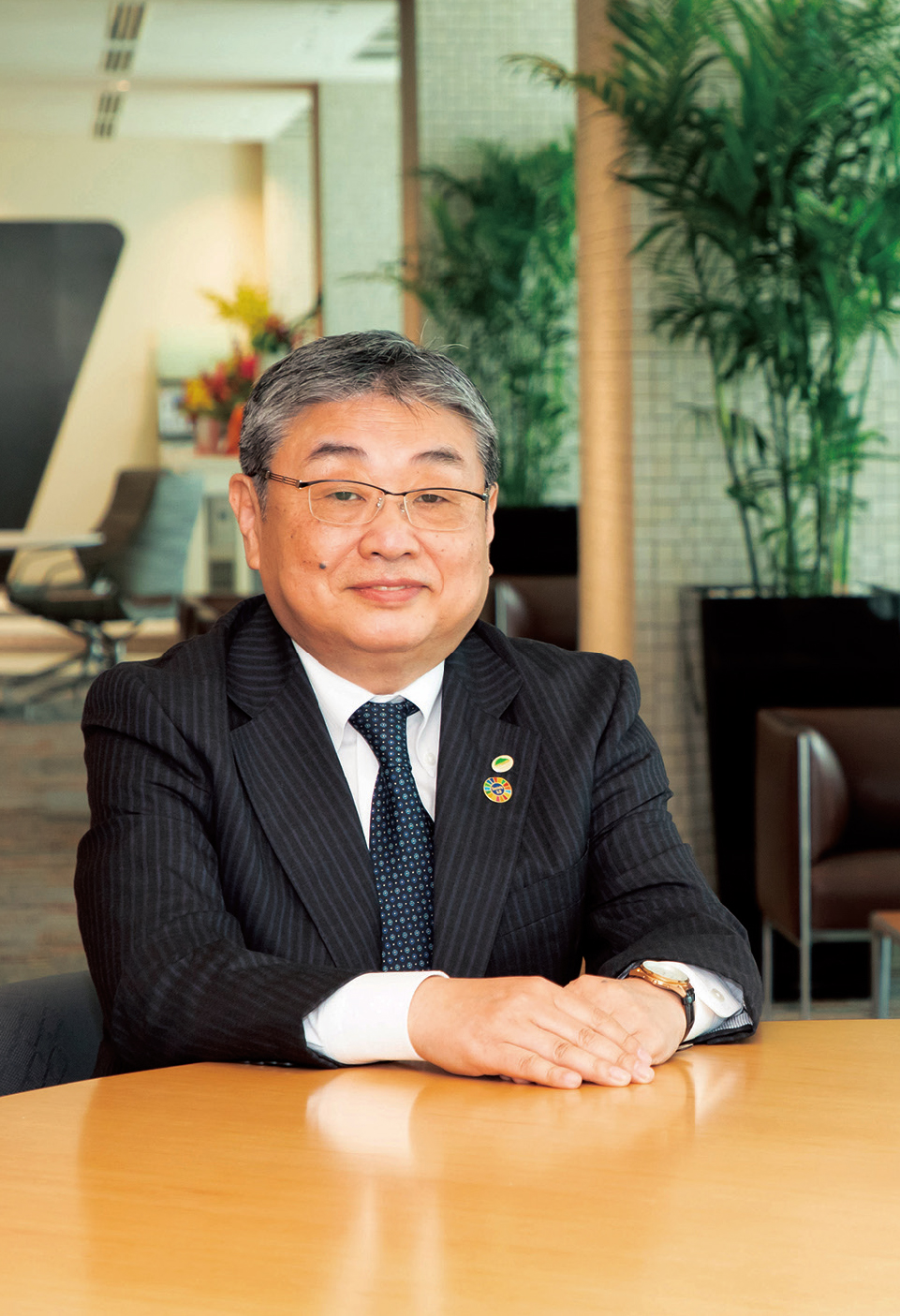
2020 is a historical year for the world. It will no doubt end up being a year people remember. Geopolitical tremors, both large and small, have struck the foundations that tie countries together. And, right where fissures from those tremors have appeared, we have the COVID-19 pandemic.
In an environment where there are significant physical restrictions in place on exchanges between countries and between individuals, the changes we are seeing in economies, societies, and people’s daily lives, are even resulting in changes in people’s culture and value sets. Societal tensions that should be avoided are causing new confrontations. To have exchanges take place, respect must first be paid to others. Then, one must accept “different cultures” from his or her own. I believe that having such “tolerance” will become necessary going forward. While simultaneously understanding the fact that the global situation is not simple, I think that we cannot give up on looking for wisdom that allows us to look out over the world.
Even in the world of business, “diversity” is becoming accepted as a normal term. Great ideas and innovation are difficult to bring about in a homogeneous society where everything is of similar quality. It is diversified societies where dramatic creativity is born. It is tolerance, I believe, which serves as the very precondition to establish diversity. Diversity is a specific measure that companies opt for of their own accord in the conducting of their business. My thinking is that these measures might serve the role of creating tolerance in society. Many companies have raised diversity as corporate philosophies. Some of them have even come out with target figures. This is evidence of the fact that the concept is also meaningful from a business perspective.
That’s why I have begun to sincerely want to learn from those outside my field in a humble manner. I believe that it is the diverse opinions and experiences of well-informed people who put themselves in different cultures from us that bring insight into running a business. I would be very glad if that point can get across to readers.
Osamu Naito
Chairman, Hitachi Research Institute